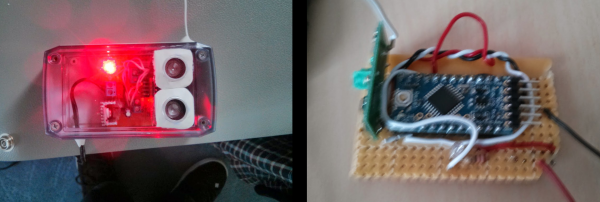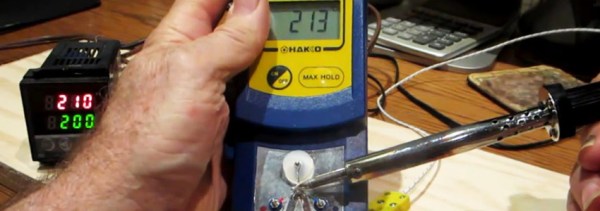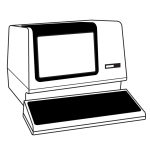[Gareth] had a friend who regularly forgot to close his garage door after parking his car and heading inside. Since [Gareth] was familiar with basic electronics and an overall good pal, he offered to make a device that would indicate whether the garage door was open or not.
The project starts off simple with an Arduino and ultrasonic distance sensor. Both are mounted to the ceiling of the garage with the ultrasonic sensor pointed down. When the garage door is open, the sensor outputs a shorter distance measurement than when the garage door is closed.
Now that the system knows when the door is open or closed, the next part was sending a signal inside the house. He could have run a wire up through the house walls to an LED indicator but decided to go wireless with a 433mhz transmitter. There is a second Arduino inside equipped with a 433mhz receiver. When the garage door is open, the Arduino inside the house flashes an LED reminding the forgetful occupant to close the door.
[Gareth] made all his code for both the sensor/transmitter and the receiver available on his site for anyone interested in making something similar.





 The Hackaday Retro Edition is our celebration of old computers doing something modern, in most cases loading
The Hackaday Retro Edition is our celebration of old computers doing something modern, in most cases loading 

 The board uses the
The board uses the 










